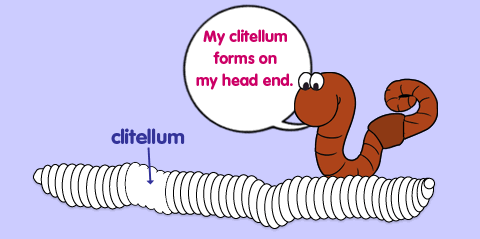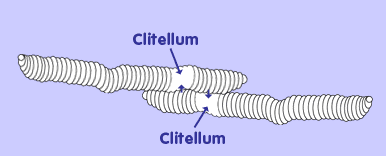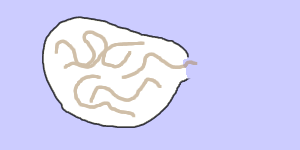WORM FACTS:

- An earthworm can grow only so long. A well-fed adult will depend on what kind of worm it is, how many segments it has, how old it is and how well fed it is. An Lumbricus terrestris will be from 90-300 millimeters long.
- A worm has no arms, legs or eyes.
- There are approximately 2,700 different kinds of earthworms.
- Worms live where there is food, moisture, oxygen and a favorable temperature. If they don’t have these things, they go somewhere else.
- In one acre of land, there can be more than a million earthworms.
- The largest earthworm ever found was in South Africa and measured 22 feet from its nose to the tip of its tail.
- Worms tunnel deeply in the soil and bring subsoil closer to the surface mixing it with the topsoil. Slime, a secretion of earthworms, contains nitrogen. Nitrogen is an important nutrient for plants. The sticky slime helps to hold clusters of soil particles together in formations called aggregates.
- Charles Darwin spent 39 years studying earthworms more than 100 years ago.
- Worms are cold-blooded animals.
- Earthworms have the ability to replace or replicate lost segments. This ability varies greatly depending on the species of worm you have, the amount of damage to the worm and where it is cut. It may be easy for a worm to replace a lost tail, but may be very difficult or impossible to replace a lost head if things are not just right.
- Baby worms are not born. They hatch from cocoons smaller than a grain of rice.
- The Australian Gippsland Earthworm grows to 12 feet long and can weigh 1-1/2 pounds.
- Even though worms don’t have eyes, they can sense light, especially at their anterior (front end). They move away from light and will become paralyzed if exposed to light for too long (approximately one hour).
- If a worm’s skin dries out, it will die.
- Worms are hermaphrodites. Each worm has both male and female organs. Worms mate by joining their clitella (swollen area near the head of a mature worm) and exchanging sperm. Then each worm forms an egg capsule in its clitellum.
- Worms can eat their weight each day.
- https://web.extension.illinois.edu/worms/facts/
Guess what? I have five hearts! All of these hearts pump blood through my blood vessels just like your one heart.
 | ||||
Hey kids! I said head to toe, but I don't really have a head like yours. But I do have a head end, the fancy word is anterior. Please remember that it is really different from the tail end, called the posterior. Just imagine how you would feel if someone said they could not tell the difference between your head and rear end (it's so embarrassing, and I get a little sensitive about that).
 | ||||

When I am a few weeks old you will notice a light-colored band forming near my front end. This is my clitellum. My clitellum will someday help to form cocoons. New baby worms will hatch from the cocoons and I will have a family.
 | ||||
I already told you about my clitellum, that whitish band near my anterior (head) end. It forms when I am about 4 to 6 weeks old. It has both male and female reproductive organs. (That means I am neither a boy or girl, I am both).

When mating, another worm and I join together with heads pointing in opposite directions. Sperm is passed from one worm to the other and stored in sacs. Then a cocoon forms on each of us on our clitellum. As we back out of the narrowing cocoons, eggs and sperm are deposited in the cocoon.

After we back out, the cocoon closes and fertilization takes place. The cocoons are much smaller than a grain of rice and are yellow-colored. Each cocoon can have 1-5 worms. If conditions are not right for hatching, such as dryness, my cocoons can be dormant for years and hatch when conditions are right.

My babies will hatch in 2-3 weeks. The new baby worms are whitish, and you can practically see through them (but I think they are beautiful, just like any parent). My babies are only 1/2 to one inch long. They are on their own as soon as they are born. In about six weeks, they will produce their own baby worms. I'll be a grandparent and the cycle starts all over again.
 | ||||






Comments
Post a Comment